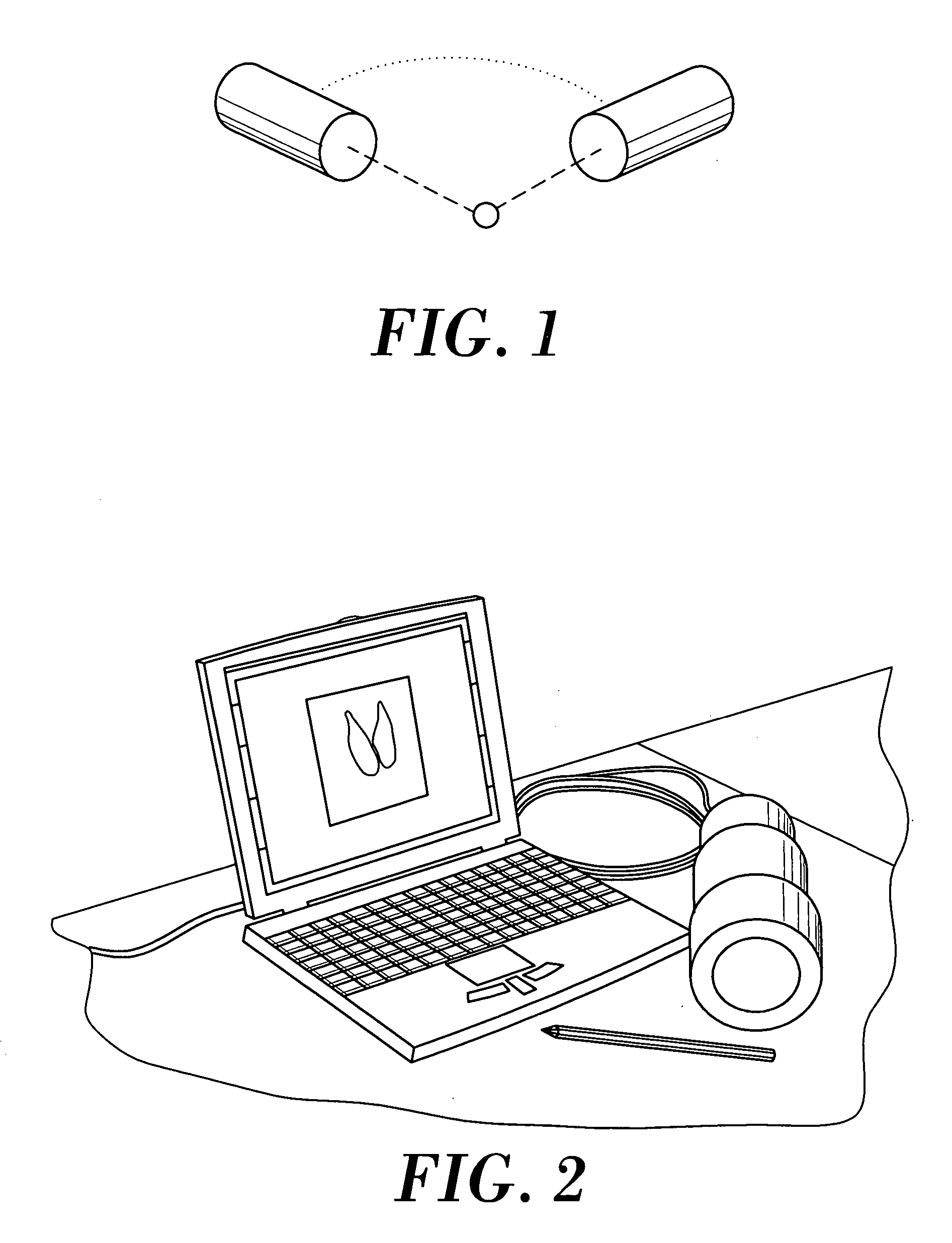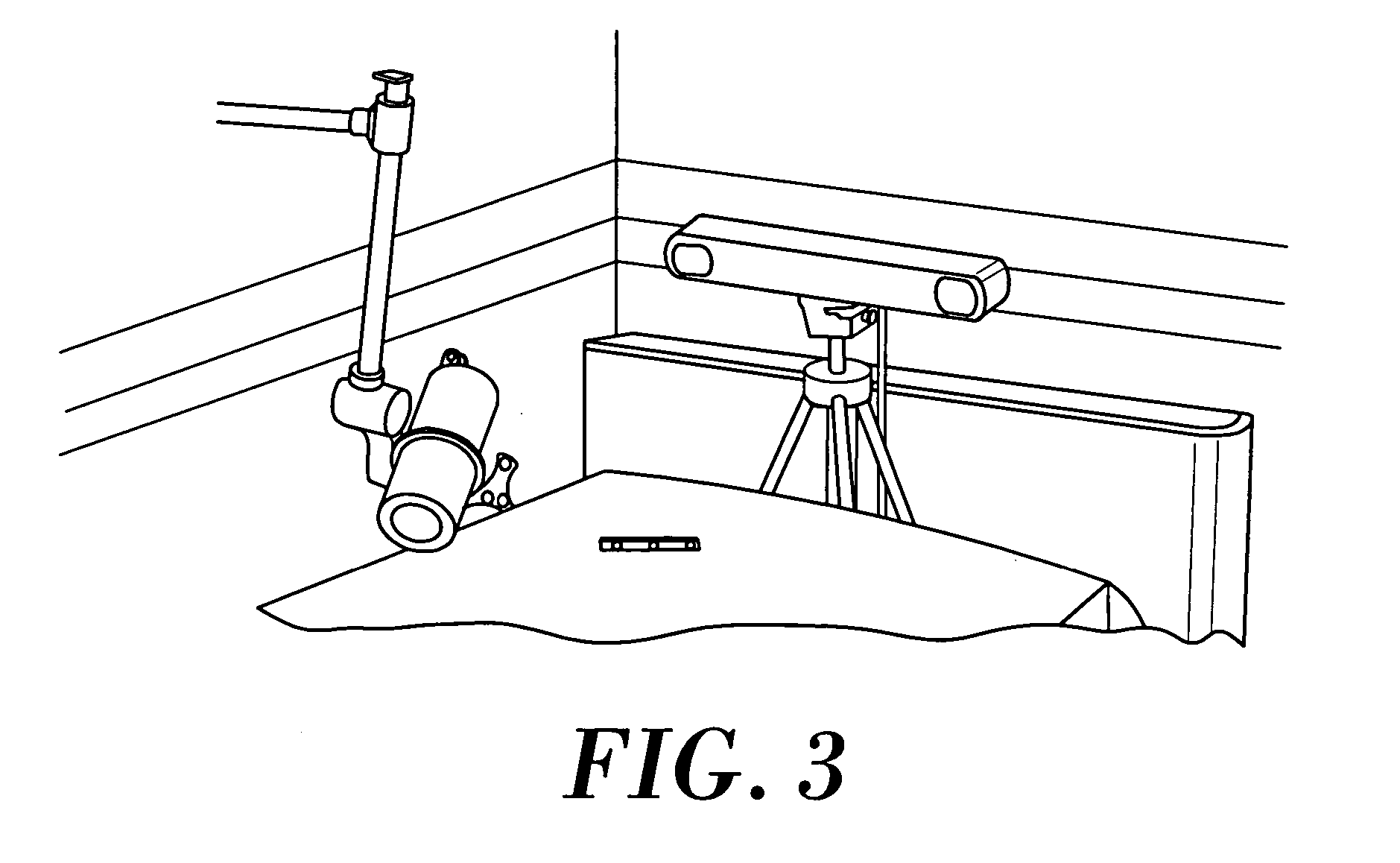Functional navigator
a navigator and functional technology, applied in the field of medicine, can solve the problems of not easy to locate the depth of a particular ganglion, navigators that obtain information, and the technique is rudimentary, and achieve the effect of greater security in extraction
- Summary
- Abstract
- Description
- Claims
- Application Information
AI Technical Summary
Benefits of technology
Problems solved by technology
Method used
Image
Examples
example 1
Embodiment of the Functional Navigator with Gamma Cameras
[0050] For this, a description is given first of all of a Gamma mini-camera and then of the surgical navigator used.
[0051] The Gamma mini-camera has a total size of diameter 90 mm and length 200 mm, and a total weight of somewhat less than 2 kg. The two characteristics, small dimensions and light weight, ensure mobility of the system (see FIG. 2). The Gamma mini-camera has a spatial resolution of about 2 mm. This Gamma camera is used for visualising small organs.
[0052] The design of a portable Gamma mini-camera is optimised for the radioactive source most widely used in medical explorations, that of 99m-Tc, which emits gamma rays of 140 keV. The camera consists of a single position-sensitive photomultiplier tube (PSPMT, HR2486 (from Hamamatsu Photonica)) coupled to a scintillation crystal, an electronic system and a high voltage source, with lead collimators being able to be coupled easily.
[0053] Physical measurements have...
PUM
 Login to View More
Login to View More Abstract
Description
Claims
Application Information
 Login to View More
Login to View More - R&D
- Intellectual Property
- Life Sciences
- Materials
- Tech Scout
- Unparalleled Data Quality
- Higher Quality Content
- 60% Fewer Hallucinations
Browse by: Latest US Patents, China's latest patents, Technical Efficacy Thesaurus, Application Domain, Technology Topic, Popular Technical Reports.
© 2025 PatSnap. All rights reserved.Legal|Privacy policy|Modern Slavery Act Transparency Statement|Sitemap|About US| Contact US: help@patsnap.com



